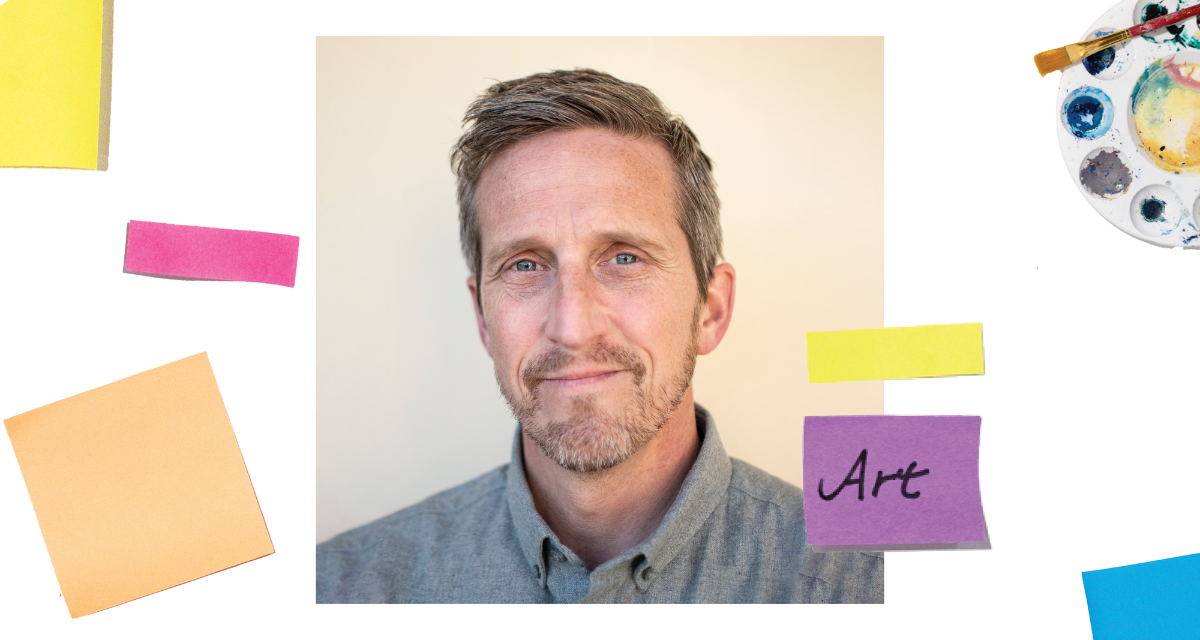What has faith to do with creating art?
A version of this article by Matthew Doll, director of Gordon in Orvieto, originally appeared in the spring 2023 issue of STILLPOINT magazine.
On the first day of our excursion to Rome, we walk across the entire city on a pilgrimage to St. Peter’s. On the way we stop at the cloister at Santa Maria della Pace and at the Tempietto. Both were designed by the architect Donato Bramante and are essential to understanding the enormous church at the end of our journey. At his Tempietto we see architecture that resonates order, rhythm, and measure. Its proportions are incredibly lucid and scaled to allow our presence to feel welcome, perhaps invited, to contemplate a sacred space. What most people overlook when they come is the fact that the Tempietto marks a traditional location where Peter was crucified upside down. For our pilgrimage to deepen, we must pause along the way and acknowledge this further element of significance, this moment of human scale and dimension, before we arrive at the enormous basilica.
Rome is easy to frame as an “ancient” city. The danger in that framing is that you refuse to truly encounter it. We do not go to Rome to simply adore the past. We go to feel the weight of the city, the weight of its history, the variety of its materials. We also go to encounter the art, the saints, the layered narratives, and spaces to begin paying greater attention as we start new conversations. Conversations that are equally about basic design, light and color, proportion, and scale…as well as about faith, hospitality, accessibility, citizenship and about others or about, as Nigerian writer Teju Cole wrote, “who counts as kin.”
Bramante was 50 when he began his major architectural works in Rome. Like so many others, before and after, Bramante came to study the forms of the past in order to invent new ways of building within the urban setting of a Rome scattered with ruins from a thousand years earlier.
Significantly, Bramante died with his work unfinished. In faith he designed something he knew he would never see to completion. He was working on something made to endure forever. And while that is clearly not the only way to imagine our work’s realization, just think of the implications. Our contemporary sense of accomplishment, self-worth, and belonging are too often tied to instant algorithms of affirmation. What if we didn’t work with these expectations running us down? What if we worked with a longer view?
A. J. Heschel said, “faith is not clinging to a shrine but an endless pilgrimage of the heart.” I would say the same thing about art.
Art is not a series of formulas to be learned for the sake of expression. Thank goodness there isn’t one way to make a painting. Neither is faith a simple transaction for belief. Art and faith present constant opportunities for communion between individuals and communities, between ideas and solutions, between man and God. Art and faith reside at the core of our yearnings for understanding. They both require serious commitment to exploring the world through the senses and devotion to be translated into shapes, language, and patterns that can be understood.
Art and faith are also models of resistance. They resist the shrinking of dialogue and combat cynicism by remaining grounded in celebrating dignity. They orient our speech, challenge our sense of power, and clarify definitions of success. As our most recent cohort of Orvieto students put it, “Faith and art for us is about finding meaning and depth in a lived experience of learning. About making new work in that soil.”
Should we not be participating in the making of our world? Art and faith are linked in their dual hope and urgency. So, like Bramante, we should keep on making even when the end extends beyond our limitations.
 The Bell
The Bell